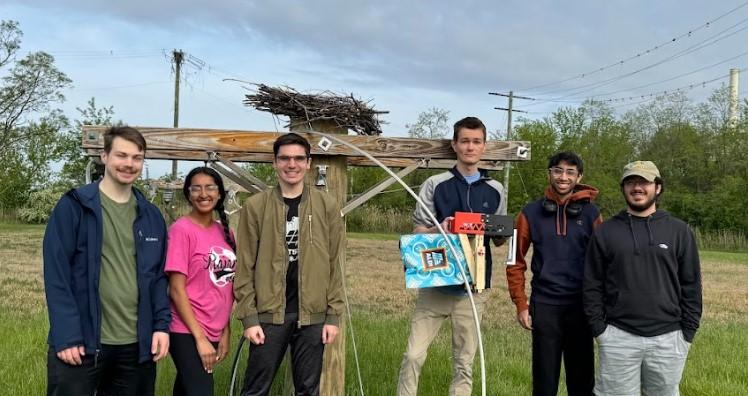Project Description:
The task at hand was to design a drone payload which means the design must be light (under 6 pounds), stable in the air, and able to be controlled remotely from a range of 200 feet. The specific task at hand is to design a payload capable of extracting bird nests from live power lines. Due to the size and weight of bird nests, it is necessary to break apart the nest into smaller pieces and collect said pieces in a controlled manner. Team Feather Force One addressed this task by designing a wooden frame to act like a pair of jaws, or a "flying bear trap". The wooden frame is pulled up by a gearing system, which stretches torsional springs causing potential energy to be stored. Once the DC motor and gearing system pulls the frame into position, a servo motor locks the frame in place. This allows the DC motor to unwind and release cable tension. Once tension is released a sudden release by the servo and locking mechanism allows the jaws to suddenly snap causing sticks to break and get swept into a net collector. The net collector is at the back of the frame and the frame is attached to the bottom of a box. This box contains the gearing, locking, and electrical systems. The top of the box serves as the connection point to the drone. The frame is able to snap, re-wind, and snap as many times as necessary in one flight without touching the ground (until the weight from sticks collected become too heavy or the drone runs low on battery).
